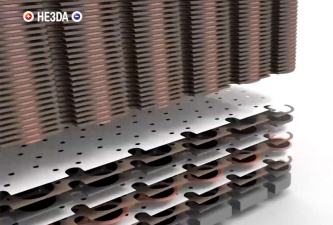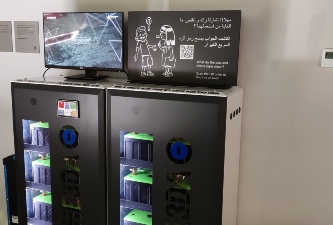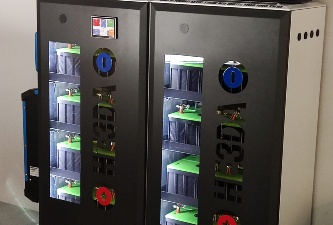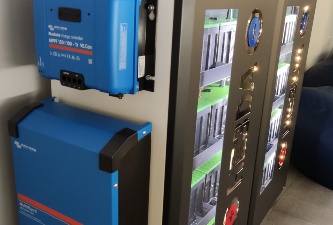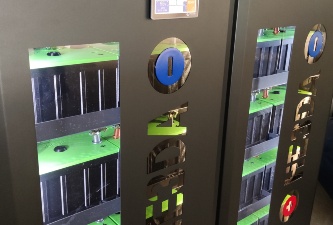Li-ion batteries are commonly used in consumer electronics and in electric cars. But they are also being used more and more in residential and industrial energy storage systems. Energy storage systems are comprised of mutually-connected rechargeable batteries into which energy obtained, for example, from solar panels on the roof of a family house is stored to be discharged later when the sun is not shining.
What is Powerbox
Powerbox is an example of a residential energy storage system with a capacity of 15-30 kWh (according to the type of battery cells used). Powerbox provides alternating current, which can be used directly in households. The conversion from direct to alternating current is performed by a power inverter (the box on the left side of the Powerbox). In addition to solar panels, the source of the direct current for Powerbox can also be other inputs, such as a fuel cell. The system capacity can be expanded modularly (see battery energy storage in the box to the right). More modules can be added as needed. Powerbox is mobile and does not require any cooling.
Nanotechnology at the heart of Powerbox
At the heart of Powerbox are Li-ion cells based on nanotechnologies, originating through a research collaboration between the J. Heyrovsky Institute of Physical Chemistry of the CAS and the company HE3DA. Thanks to its unique 3D architecture, the electrodes can be up to about 2 mm thick, i.e., considerably larger than for regular (2D) Li-ion batteries. The cells can be charged and discharged by currents of tens to hundreds of amperes. Thanks to the low internal electric resistance and the absence of organic materials (except for electrolytes), these batteries are also very safe with regards to explosions or fire. The low production costs and easy disassembly and almost full recyclability are also important.
Powerbox specifications
-
Single-phase (hybrid/island) battery system
-
Maximum input voltage from photovoltaic panels: 150 V (DC)
-
Peak power of photovoltaic panels: up to 5.8 kWp (possibly even more, but the higher power is not transferred)
-
Battery: 48 V, Li-ion
-
Maximum input current from power grid: 50 A (at a voltage of 230 V and a frequency of 50 Hz)
-
Invertor power: 5000 VA
